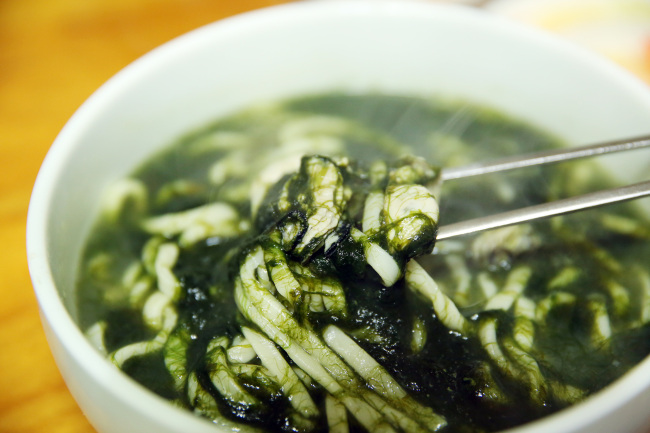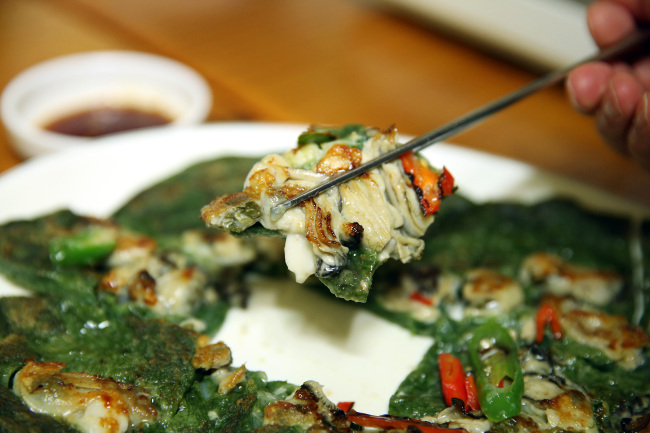Oysters can be thought of as the jewels of the winter food season. Delicate, briny and creamy are just a few ways one can describe these beloved bivalves, renowned for their plating style, alluring taste and texture, as well as their sensuous appeal.
Oysters in Korea, mainly farmed and harvested from the clean cool southern waters of South Jeolla Province, are abundant and affordable, making a pleasing addition to any dish nearly year-round. But during the winter, when the colder waters produce cleaner, more nourished seafood and oysters are at their best, the mellow flavor lends itself to a number of dishes.
Traditionally, wherever you enjoy oysters they are served raw, steamed or grilled, garnished then roasted or baked, in soups and stews, or battered and fried. Korea has a number of distinctive ways to eat oysters. With steamed pork belly bossam wraps they make an interesting take on surf and turf, and they can also be found atop fresh steamed dolsot hot pots, or in gul gukbap, a refreshingly light soup.

Maesangi oyster kalguksu at Encore Kalguksu in Seocho-dong, Seoul (photo: Lee Kyung Sub)

Maesangi oyster jeon pancake at Encore Kalguksu (photo: Lee Kyung Sub)
Ideally one would like to eat this seasonal specialty near its source, such as in Tongyeong, South Gyeongsang Province, the mecca for domestic oysters. With slim pickings regarding high quality restaurants in Seoul that specialize in oysters, one has to resort to either a chain restaurant or the random oyster dishes found on menus here and there.
This makes it hard to enjoy more varied styles of oyster dishes, but at Encore Kalguksu in Seocho-dong, their rendition of maesangi guljeon, oyster laden seaweed flour pancakes, and maesangi gulkalguksu, hand cut noodles in oyster broth, is a pleasant surprise for those hankering to eat them in a unique way.
The strikingly green maesangi oyster jeon, a fried pancake made of fresh maesangi, wheat flour and egg, studded with fresh oysters and vegetables, is not only a visually beautiful dish, but a pleasantly light and chewy pancake with delicate undertones of ocean flavor. The generous portions of plump oysters stand out above a thin crepe-like pancake, though the flavor is not as briny as one would expect or hope for. I suspect this is because the custom of packaging pre-shucked and cleaned oysters in fresh water debilitates much of the natural sea taste with only residual flavor left within the oyster.
The kalguksu is seasoned with oysters, clams and strands of maesangi seaweed, creating a melange of seafood flavor, but once again, the oyster flavor does not predominate. Oysters, unlike other shellfish such as clams and mussels, are appreciated for their mellow flavor and sheer presence. So unless one is looking for a punchier flavor, seeking a fresh shucked oyster straight from the shell is advised.
By Christine Cho
Encore Kalguksu
Address: 1451-94 Seocho-dong, Seocho-gu, Seoul
Phone: (02) 525-8418







![[KH Explains] How should Korea adjust its trade defenses against Chinese EVs?](http://res.heraldm.com/phpwas/restmb_idxmake.php?idx=645&simg=/content/image/2024/04/15/20240415050562_0.jpg&u=20240415144419)